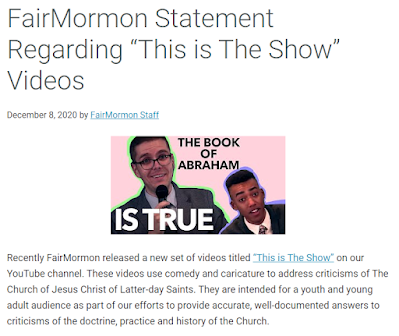I strongly support the idea of what FairMormon purports to be–a useful web-based resource for factual information and useful answers. FairMormon would be an awesome resource if it was actually fair.
Fairness includes transparency and openness to other faithful interpretations and perspectives.
But the organization instead is an advocate for specific intellectual fads and it uses anonymity to obfuscate its editorial objectives and provide plausible deniability to the scholars and others who provide content.
_____
Yesterday FairMormon published a response to the publicity about the videos they released under their TITS (This Is the Show) brand. Yeah, they actually think that’s a cool brand name.
https://www.fairmormon.org/blog/2020/12/08/fairmormon-statement-regarding-this-is-the-show-videos
Source: About Central America

One thought on “FairMormon statement on videos”
I tried to watch a recent episode of this new approach called This Is the Show (TITS). I quickly found this TITS approach very condescending and a mocking parody by pundits. A high percentage of the YouTube Comments have a similar observation. Maybe there is a small niche of 18-25 year old followers who relate to it. I find it offensive and not the least bit useful or helpful.
Comments are closed.